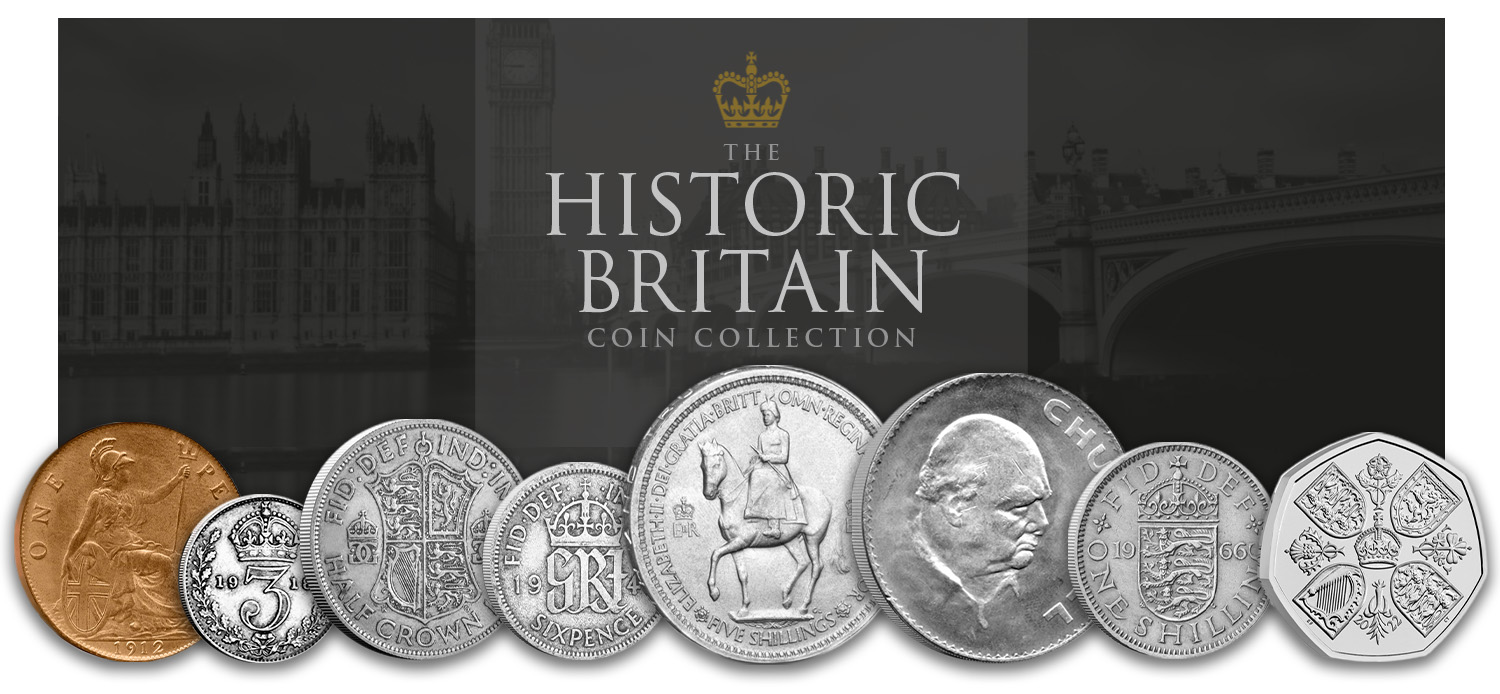Posts Tagged ‘Winston Churchill’
The coin that speaks volumes …
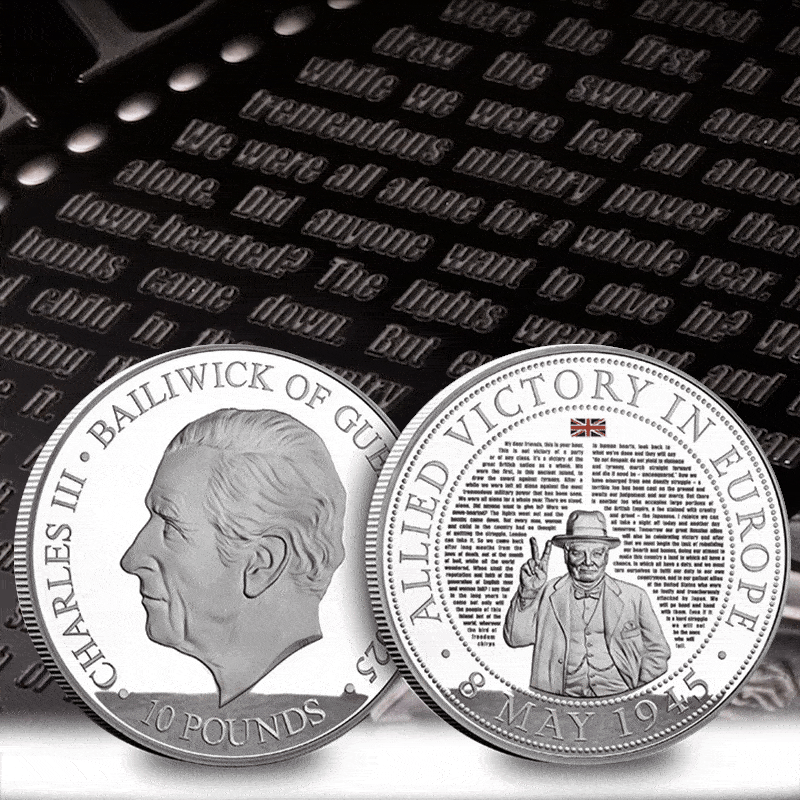
Introducing the VE Day Winston Churchill Speech 5oz Masterpiece—a remarkable coin that immortalises the inspiring words of a leader who guided Britain through its darkest days.
A Tribute to Triumph and Resilience
On May 8, 1945, as jubilant crowds gathered on the balcony of the Ministry of Health, Winston Churchill delivered his powerful second speech—a moment that encapsulated relief, gratitude, and the hard-won victory over Nazi Germany.
The Masterpiece coin captures the very essence of that historic day, echoing the hope and resilience of a nation emerging victorious from the long struggle of war.
Exquisite Craftsmanship and Historic Detail
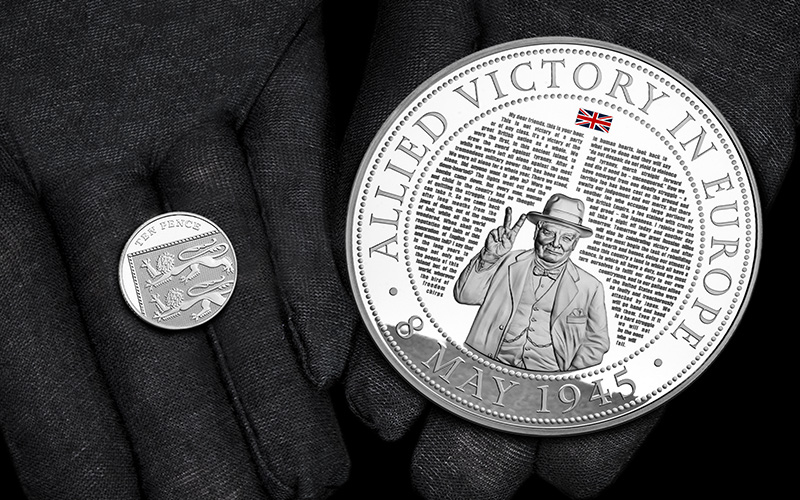
- Impressive Size: With a diameter of 100 mm and crafted from 5 oz of solid, pure silver, the coin boasts a stunning proof finish. Each piece is struck to the highest possible standard, resulting in a mirror-like quality that makes every detail come to life.
- Iconic Imagery: The reverse of the coin features an exquisitely detailed portrait of Winston Churchill, his resolute expression and famous V-for-Victory sign perfectly encapsulating the spirit of the era. At the top, the Union Jack waves proudly, symbolizing British pride and triumph.
- Micro-Engraved History: Perhaps the most captivating feature is the micro engraving of all 368 words from Churchill’s historic VE Day speech. These words, though incredibly tiny, have been immortalized in silver. To fully appreciate the intricate detail, each coin comes with a magnifying glass—allowing collectors to read every word and feel the power of that historic moment.
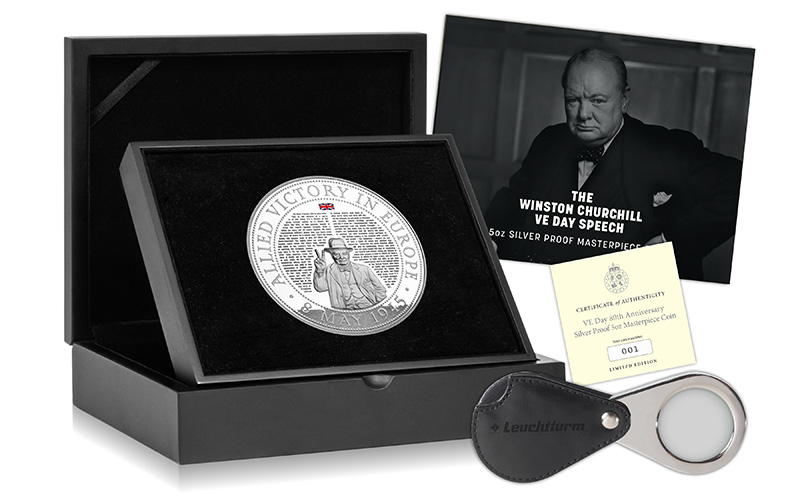
Limited Edition and Unmatched Exclusivity
In celebration of the 80th anniversary of VE Day, only 495 coins have been issued. This extremely limited edition ensures that owning this coin is not only a tribute to history but also an investment in a piece of art and legacy. Imagine being one of the select few in the world to possess such an iconic commemorative piece!
Secure Your Piece of History Today
Priced at just £695, the VE Day Winston Churchill Speech 5 oz Masterpiece is available with an option to pay in 10 interest-free instalments—making it accessible for both passionate collectors and history enthusiasts alike. With a 30-day money-back guarantee and no payment required until the coin is dispatched, your purchase comes with complete peace of mind.
This coin is more than a collectible—it is a tangible link to a defining moment in modern history, a symbol of victory, and an enduring tribute to Winston Churchill’s leadership. Don’t miss the opportunity to add this remarkable piece to your collection.
Step Back in Time: The Ultimate Historic Coin Collection
Collecting historic coins is more than a hobby—it’s a journey through time. Each coin is a tangible piece of the past, capturing moments that shaped the course of British history. From legendary rulers to pivotal events, these coins connect us to those who lived through Britain’s most defining moments.
For both new and seasoned collectors, the Historic Britain Coin Collection offers the perfect opportunity to own a curated set of iconic coins. Each coin tells a story, from the sinking of the Titanic to the coronation of Queen Elizabeth II. This collection allows you to hold history in your hands and immerse yourself in Britain’s extraordinary legacy.
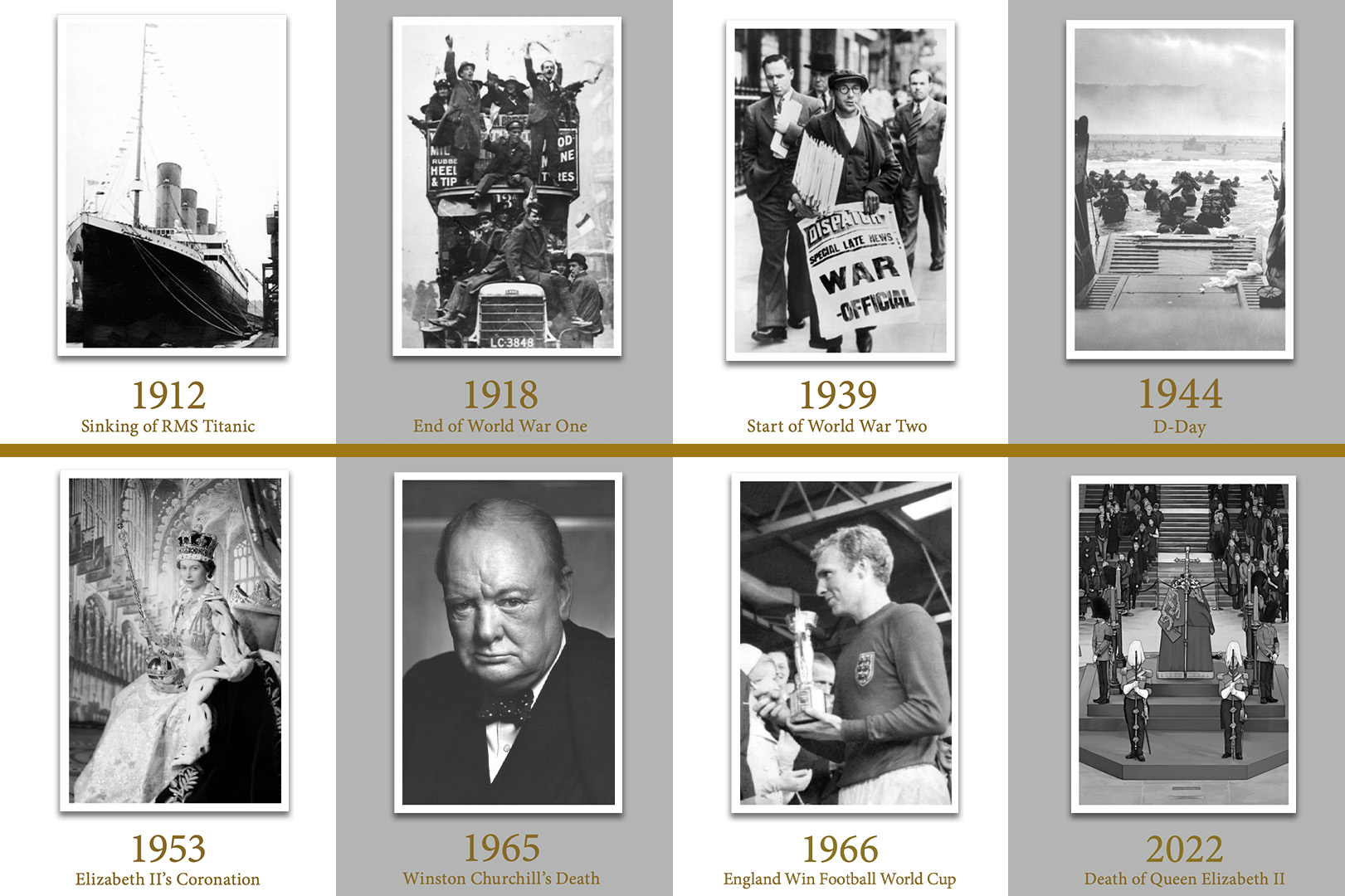
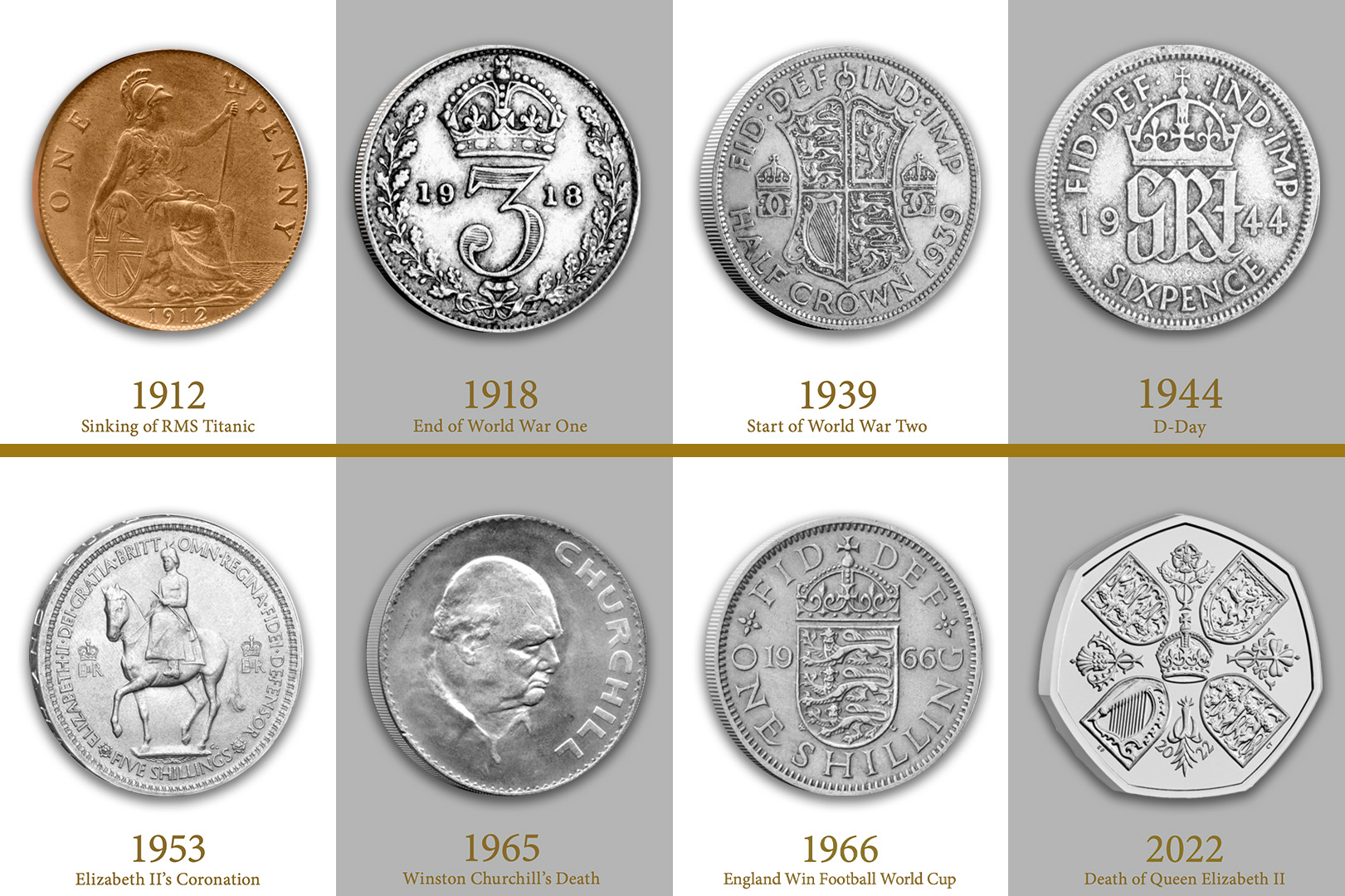
This curated set of eight iconic British coins captures some of the most poignant events of the last century, each telling its own story of triumph, tragedy, and legacy.
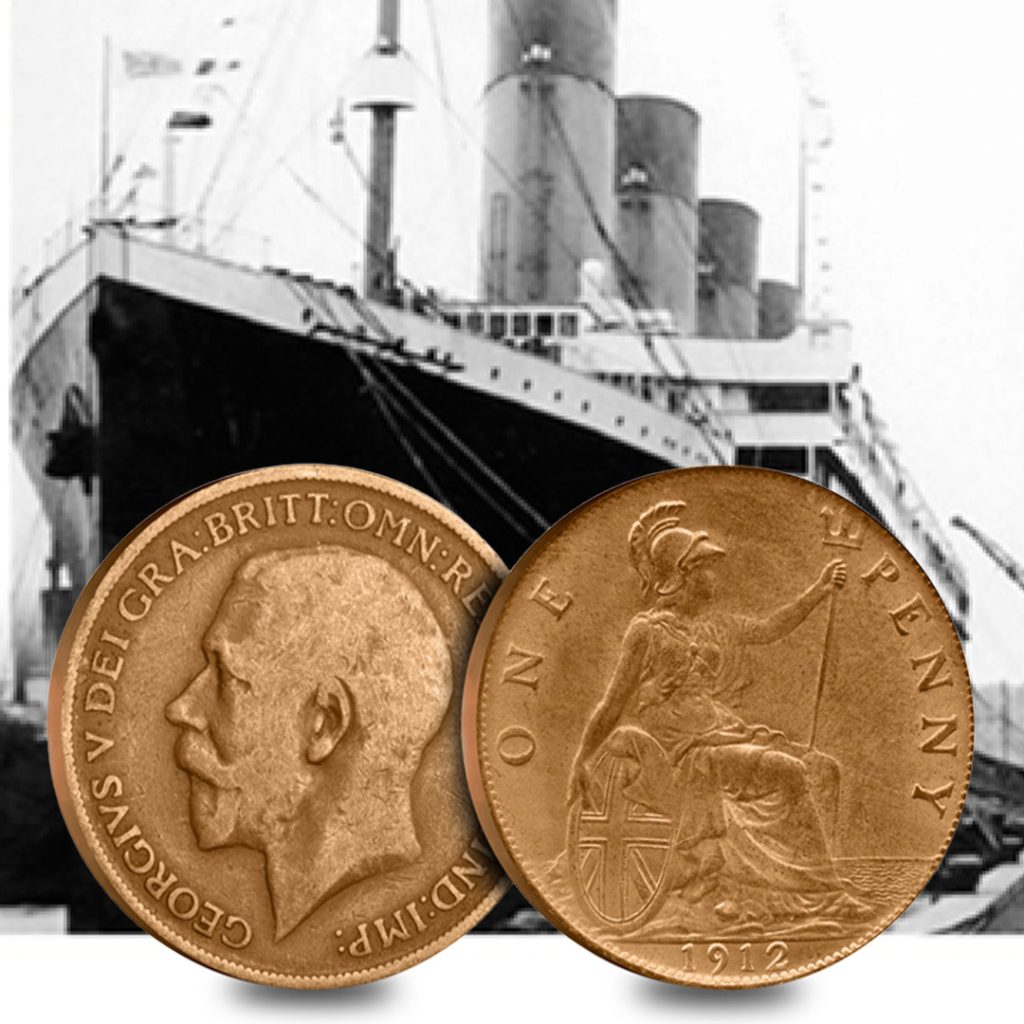
1912 Penny – The Year the Titanic Sank
A tragic chapter in maritime history, the 1912 Penny takes you back to the year the RMS Titanic sank on its maiden voyage. Once hailed as “unsinkable,” the Titanic’s journey ended in catastrophe when it struck an iceberg, claiming over 1,500 lives. This coin from that fateful year reminds us of the fleeting nature of human ambition and the importance of preparedness.
1918 Threepence – The Final Year of World War One
The war that was meant to end all wars came to a close in 1918. The 1918 Threepence, minted in the final year of World War I, symbolises the hard-won peace that followed the devastation of conflict. This coin stands as a tribute to the soldiers and citizens who endured the unthinkable to restore balance to a broken world.
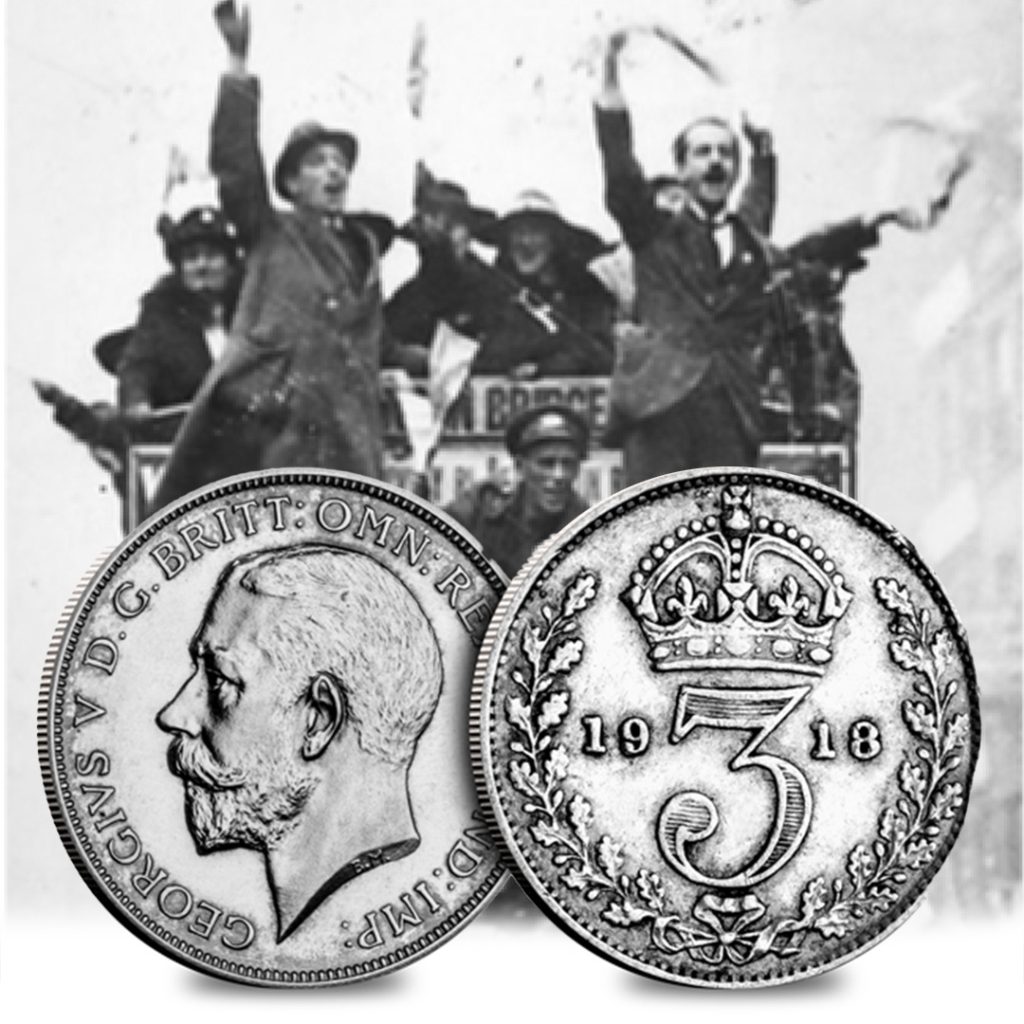
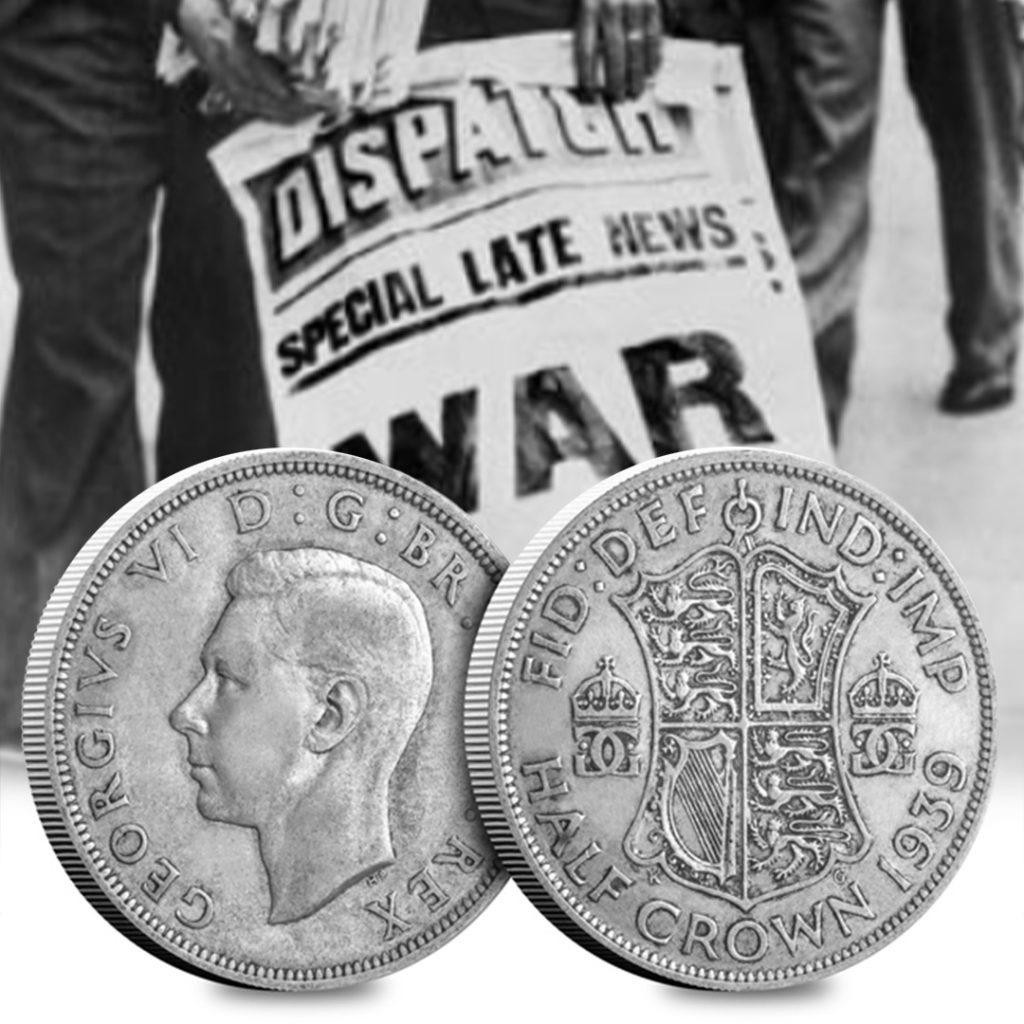
1939 Half-Crown – The Beginning of World War Two
As storm clouds gathered across Europe, Britain braced itself for another world conflict. The 1939 Half-Crown, struck in the first year of World War II, marks the beginning of a long and brutal struggle. This coin is a testament to the resilience and determination of the British people as they faced one of their darkest times.
1944 Silver Sixpence – The Year of D-Day
June 6th, 1944, forever known as D-Day, was a turning point in the Allied campaign to liberate Europe from Nazi occupation. The 1944 Silver Sixpence in this collection honors the bravery of the men who stormed the beaches of Normandy, playing a vital role in securing freedom and peace for generations to come.
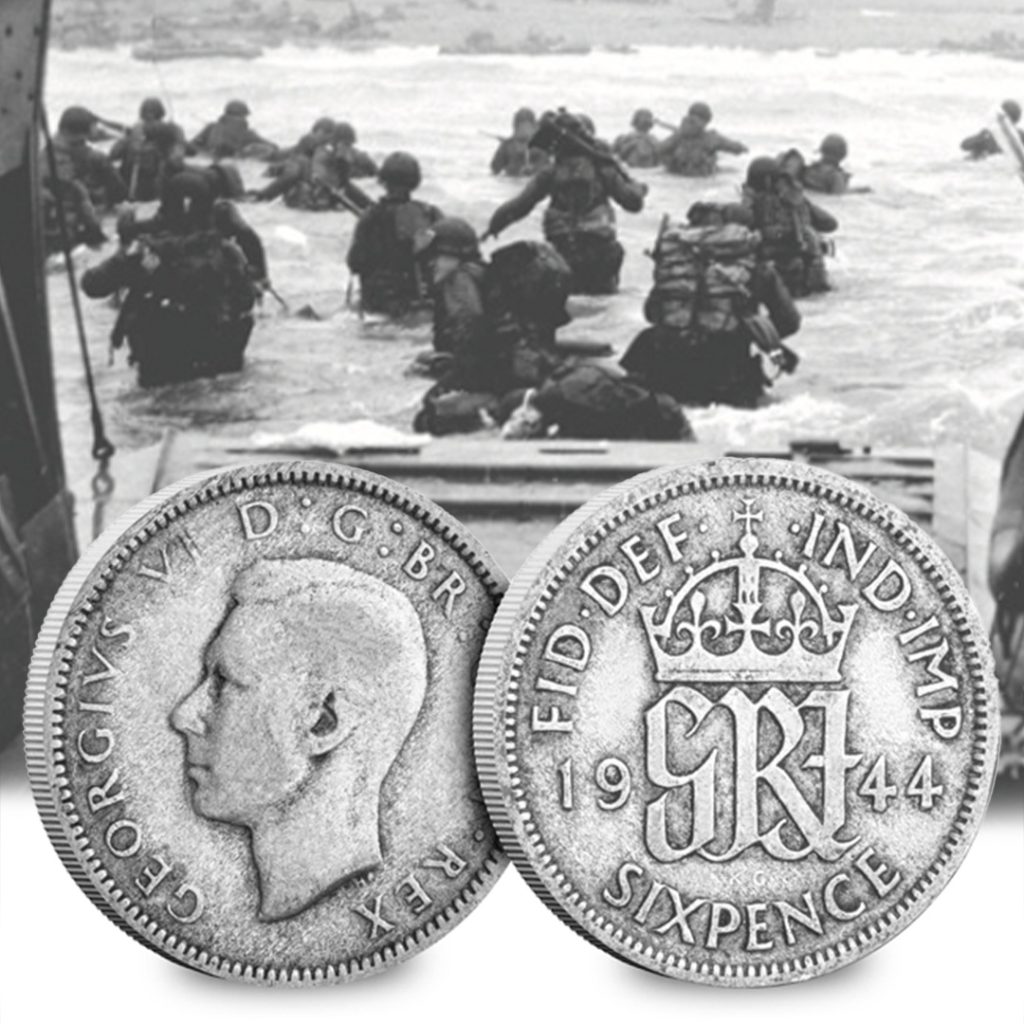
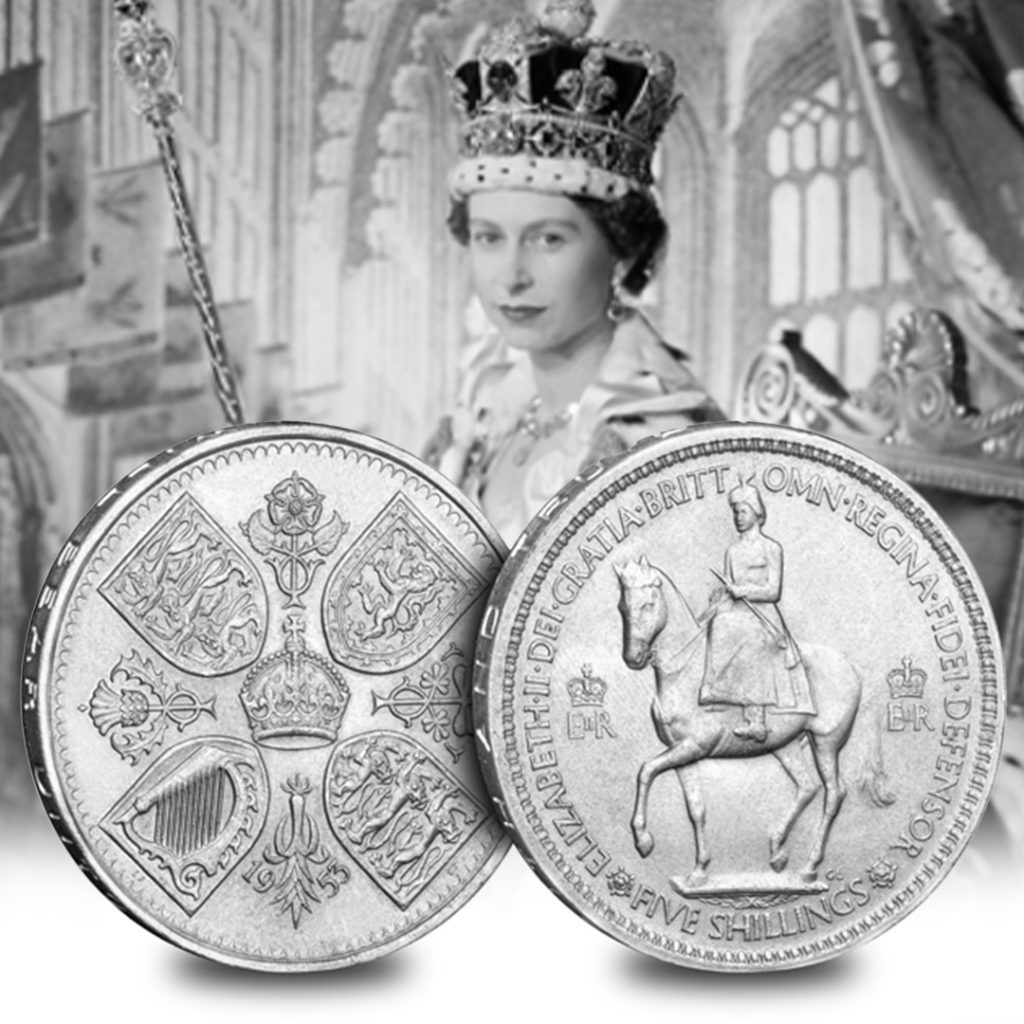
1953 Coronation Crown – Queen Elizabeth II’s First Coin
The 1953 Coronation Crown commemorates the coronation of Queen Elizabeth II. As Britain’s longest-reigning monarch, her coronation was a moment of national pride and unity. Featuring the Queen on horseback, this coin marks the beginning of a reign that would span over seven decades, making it a cornerstone of this collection.
1965 Churchill Crown – Honouring a Wartime Leader
Sir Winston Churchill, the man who led Britain through World War II, was immortalized on the 1965 Churchill Crown, issued in the year of his death. This was the first time a non-royal figure appeared on a British coin, cementing his legacy as one of the greatest leaders in British history.
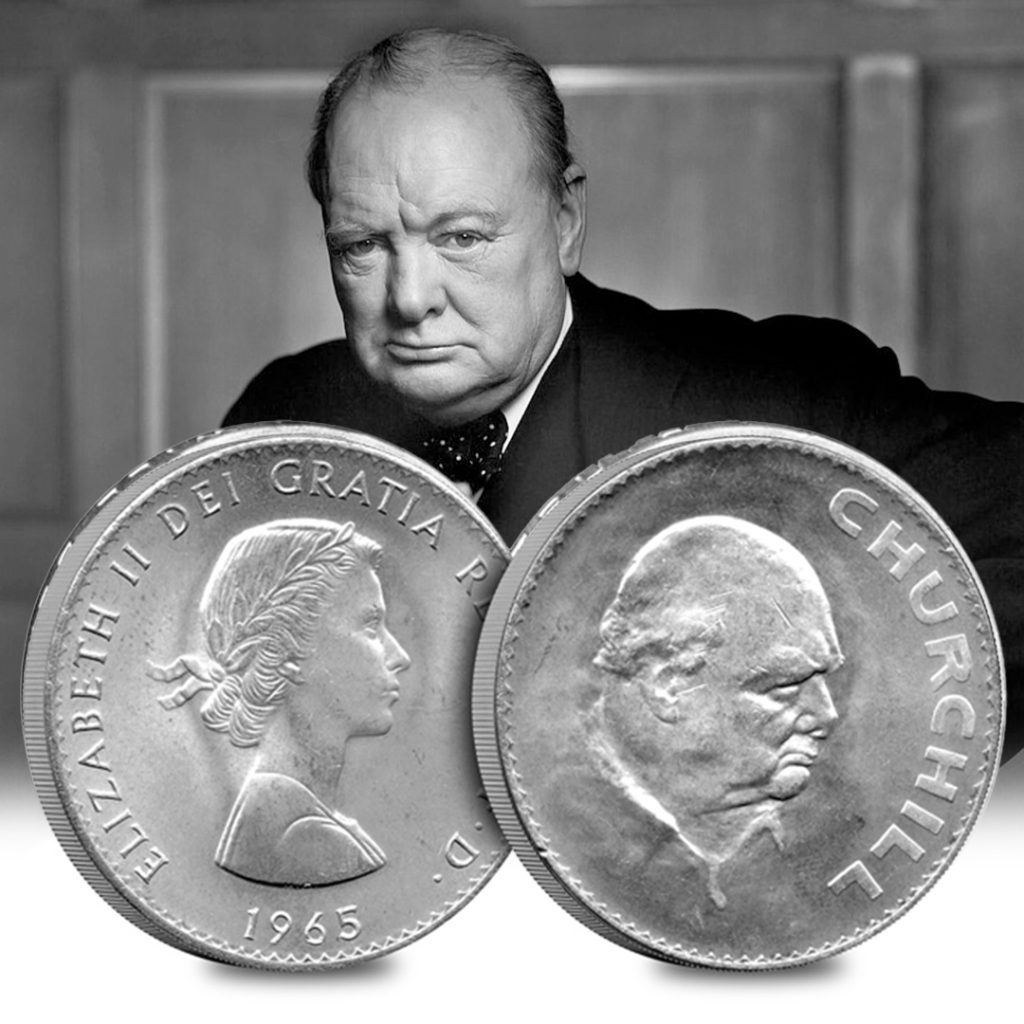
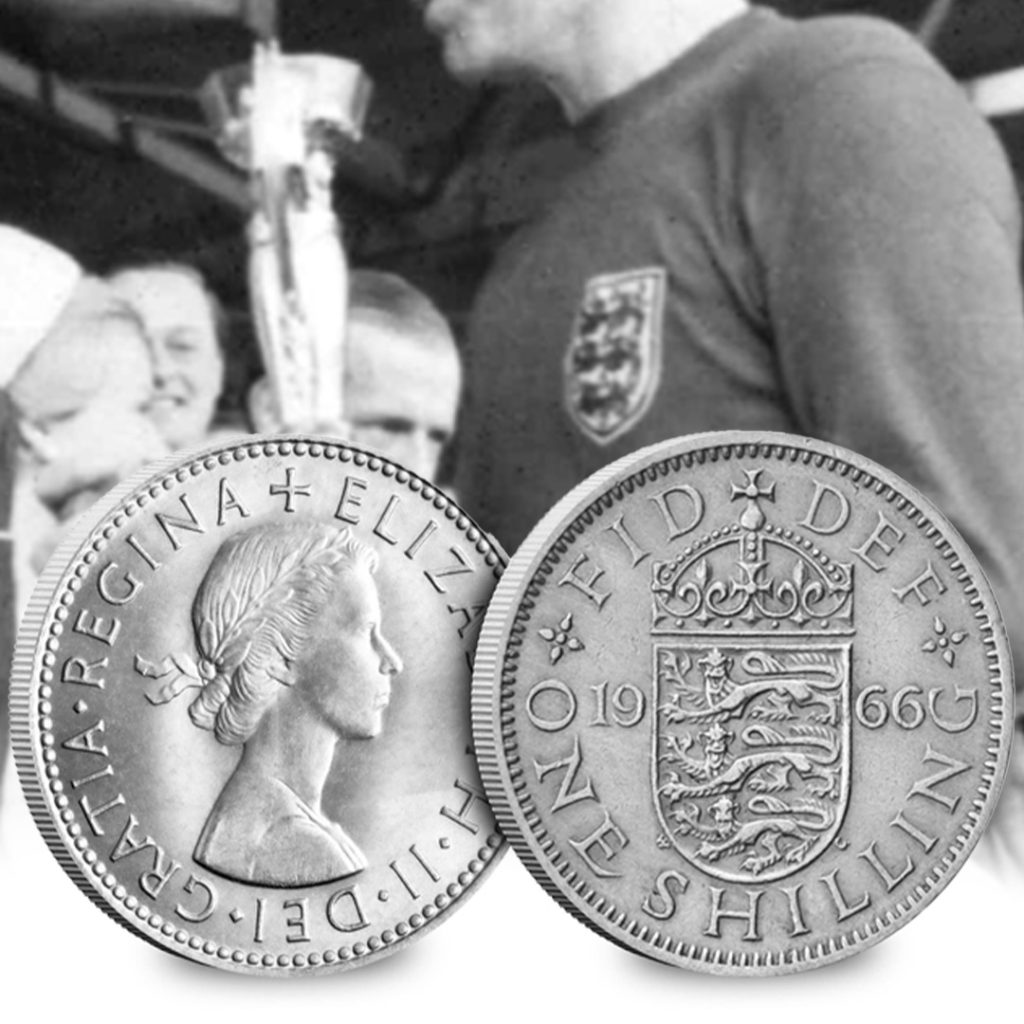
1966 Shilling – England’s Football Glory
1966 was a year of triumph for England, as the national football team secured their first and only World Cup victory. The 1966 Shilling captures the excitement of this historic win and the moment England was crowned champions, a moment that still resonates with football fans today.
2022 Memoriam 50p – A Tribute to Elizabeth II’s Reign
The final coin in the collection, the 2022 Memoriam 50p, pays tribute to Queen Elizabeth II after her passing. Issued to honor her record-breaking 70-year reign, this coin is also notable for being the first to feature the official effigy of King Charles III. It’s a fitting close to a remarkable chapter in British history.
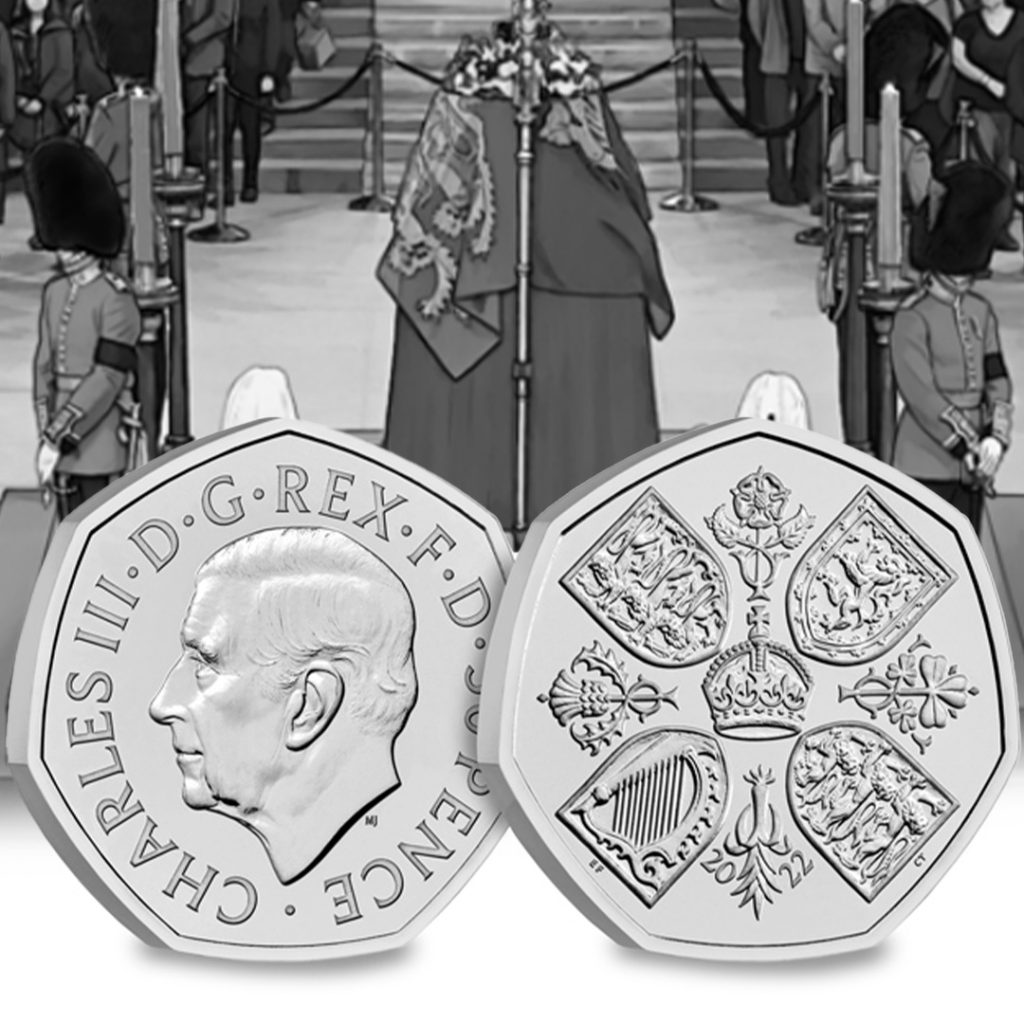
Your Connection to British History
This unique collection isn’t just a set of coins—it’s a journey through Britain’s most iconic moments. Each coin is preserved in a bespoke presentation case, along with a timeline certificate of authenticity, ensuring that you not only own a part of history but also the story behind it.
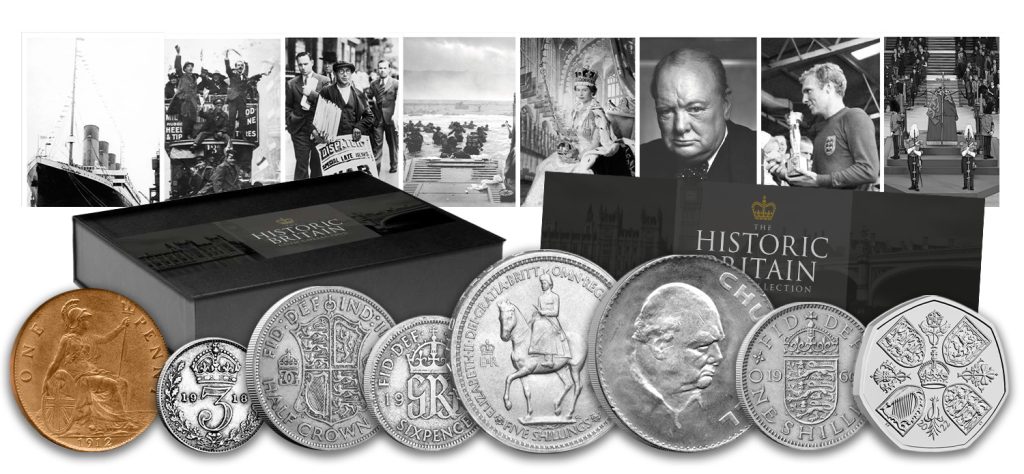
With the limited number of these historic coins available, this is your chance to secure a collection that spans over a century of British history. Don’t let this opportunity slip away.
> Click here to get your Historic Britain Coin Collection today <
BEHIND THE DESIGN: The hidden features in the Winston Churchill £2 Set
Remembered as Britain’s legendary wartime leader, a Nobel Prize winning author and a passionate painter… Sir Winston Churchill wore many “hats” in his long and varied life.
And these are some of his roles and responsibilities that have been thoughtfully honoured with the BRAND NEW Sir Winston Churchill £2 Coin Set.
Watch our video below to discover the story behind each design in this special collection – including some special hidden features!
Already in HIGH DEMAND with collectors, each design by David Young reflects on Churchill’s undeniable legacy…
The Leader
His most famous role, Churchill is best known for leading Great Britain during World War II, where his indomitable spirit and strategic foresight rallied the British people and helped to navigate the challenges of war. David’s design shows Churchill making his famous “V for Victory” gesture…
The Writer
Churchill was a prolific writer, penning several historical accounts and memoirs. He was awarded the Nobel Prize for Literature in 1953 and that very prize can be seen in David’s design.
The Orator
Renowned for his powerful and stirring oratory, Churchill delivered some of the most memorable speeches in history, such as the “We shall fight them on the beaches” speech and a famous line from that very speech is inscribed as part of the coin’s design.
The Painter
In his later years, Churchill found solace in painting, producing over 500 works of art under the pseudonym “Charles Morin”. Churchill’s passion for painting helped him with his depression, which he referred to as his “Black Dog”. David’s design shows a black dog sat alongside Churchill as he’s painting another masterpiece.
The Patriarch
Despite his demanding career, Churchill maintained a close relationship with his family. He was devoted to his wife, Clementine and his children. David’s design shows Churchill alongside four of his children. Churchill is also holding a Marigold – in a touching tribute to his daughter Marigold who died as a child.
The Winston Churchill BU £2 Set
Available exclusively from The Westminster Collection, you can place your reservation today for JUST £64.95 (+p&p). £2 coin sets are often highly sought-after with collectors and considering the importance of this release – perfectly honouring one of World War II’s most important figures on the 80th anniversary of D-Day – this has the makings of an all-time great.
Click here to secure the BRAND NEW Sir Winston Churchill BU £2 Set >>

